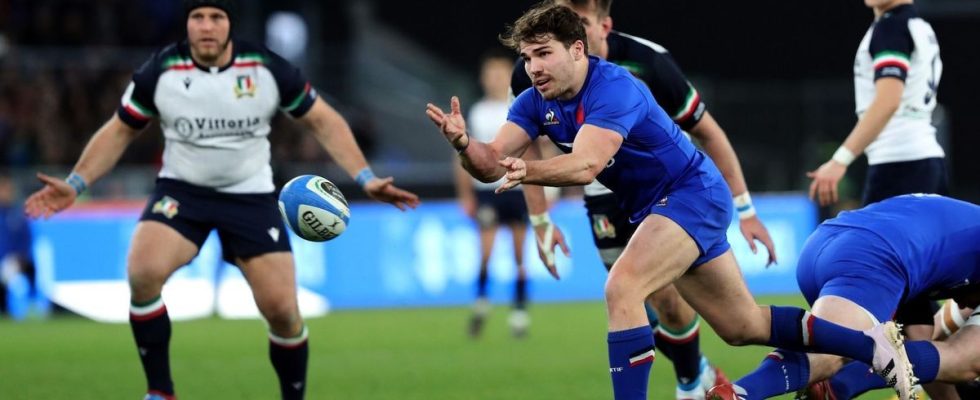Published on
Updated
Reading 3 min.
A few days before the start of the Rugby World Cup, Robert Jaffard, neurobiologist, explores the links between sport and memory and underlines the importance of the mental preparation of high-level athletes. A fascinating insight into the minds of champions.
Member of the B2V Observatory of Memories, neurobiologist Robert Jaffard details the links between physical activity, memory and more generally cerebral activity.
Sport good for memory
Can practicing a sport affect our memory? Yes according to our expert who recalls that work carried out on animals and humans has shown that physical activity improves declarative/relational memory which, like episodic memory and spatial memory, depends critically on seahorse. Physical activity would also improve the functioning of the prefrontal cortex which, in relation to the hippocampus, plays an essential role in the encoding, consolidation and recall of memories.
What is the biological explanation for these links? “Recently, it has been shown that cathepsin B, an enzyme produced during physical activity, is one of the peripheral signals that stimulate hippocampal plasticity and its positive consequences on memory” testifies the expert.
But beyond this hypothesis, he emphasizes the observed effect of physical activity on aging: 150 minutes/week of physical activity (WHO recommendation) is enough to improve the memory of young adults and even, beyond that, counteract the deleterious effects of normal and pathological aging.
The memory of the right gesture comes through repetition
Just as musicians rehearse their scales, athletes repeat numerous playing sequences, precise gestures… What is the purpose of this repetition? Our expert enlightens us. “The development of this motor or perceptual-motor “ability” (skill), a form of non-declarative memory called procedural, goes through three stages: a cognitive stage of explicit representation of the gesture, an associative stage of repeated execution with error correction and an autonomous stage where the skill becomes a “motor program” comparable to an innate reflex“.
In other words, repetition makes it possible to establish precise cerebral “maps” at the cerebral level which will incorporate the right gesture, the right timing… to the point of modifying the brain. “Morphometric neuroimaging actually shows that the expertise of high-level athletes, from golf players to boxers, including basketball players and gymnasts, is associated, depending on the discipline practiced, with marked morphological “traces” within the gray matter and the white matter of certain specific brain regions. And in total, it is estimated that more than 80% of the cerebral gray matter of an adult brain can be modified by physical activity.” specifies the expert.
The importance of mental work
Mental work is complementary to physical preparation. It consists of imagining the movement accompanied by all the sensations it produces (eg muscular tensions, visual perceptions) and including, if possible, the order and timing of the motor sequences that compose it. This mental imagery leads to performance gains comparable to those obtained through actual physical exercise. Both are complementary and comparably enhanced by sleep.
“Mental imagery has shown that observing or performing a particular movement yourself activates the same neurons. This is what we call the “mirror neuron” system.” specifies our expert.
Added to this is another type of mental work which explores so-called “open” skills when they must adapt to a changing environment (eg movements of the ball, the ball or the puck as well as the opposing player(s). “This will be, for example, the explicit mental construction of possible future scenarios based on the memory of past experiences including their emotional tone.” specifies the neurobiologist.
How to stay focused on the big day? Should memory (evocation of memories, etc.) be put aside to leave room only for extreme concentration? “Although these two memory systems are often considered functionally independent or “encapsulated”, there are experimental situations in which they can compete (eg Memory for a list of words can disrupt the recall of a digital motor sequence )” admits the expert.
To remain focused on a single objective, we must try to silence the “default mode network” (RMD), made up of brain structures whose synchronous activation leads, in the subject at rest, to a “mental wandering” involving between others on the evocation of personal memories (autobiographical memory).
“Reducing or eliminating the activity of the RMD to concentrate on the objective of the moment supposes a switch of cerebral activity towards the executive system of the prefrontal cortex which allows a “refocusing” on the action in progress and its management” specifies Robert Jaffard.
So many keys that will allow high-level athletes but also amateur athletes to achieve their goals and improve their physical condition and memory.

